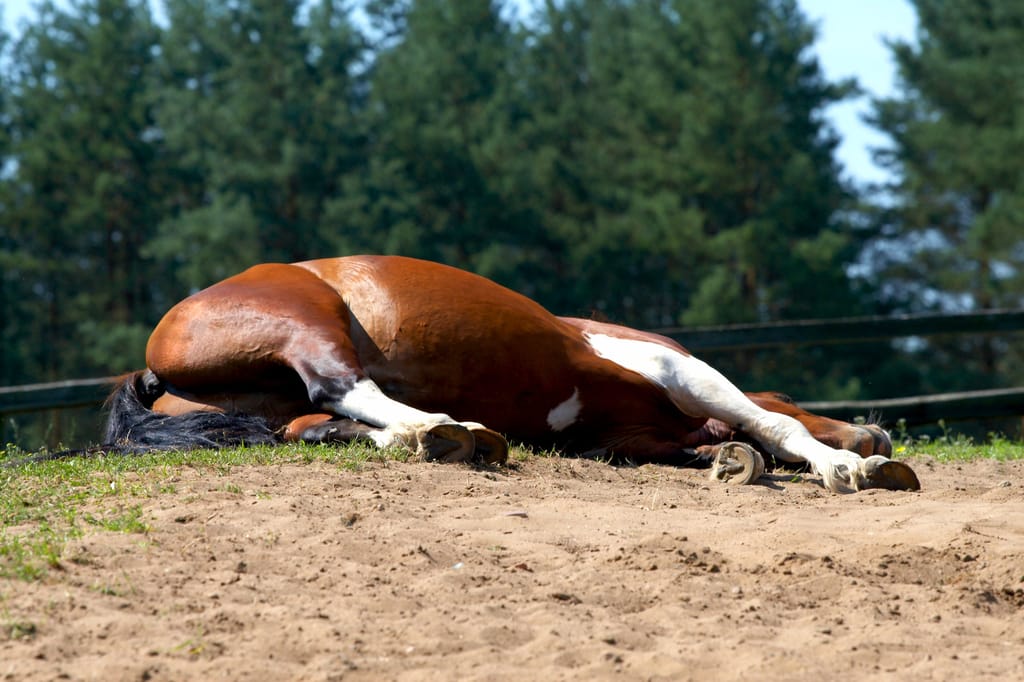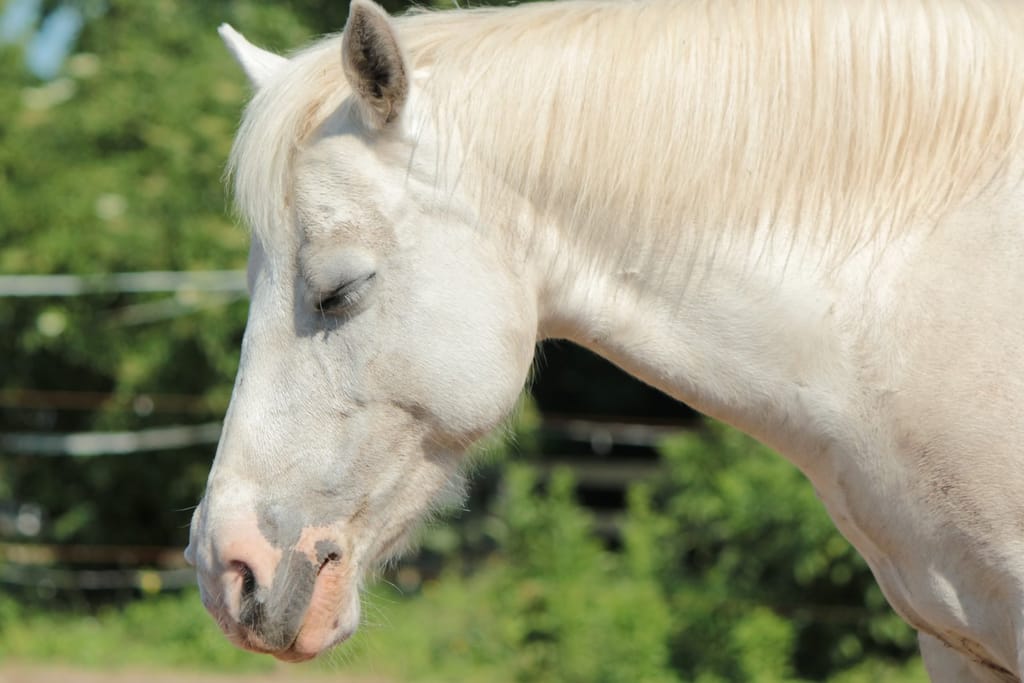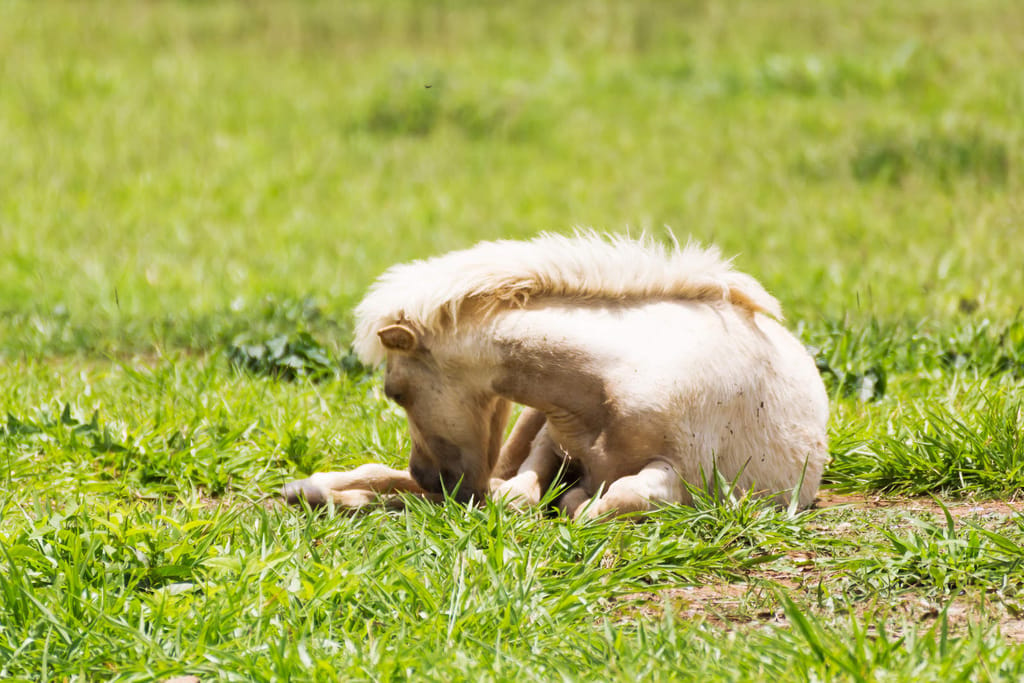How do horses sleep?
Horses sleep both standing up and laying down, but they prefer to sleep laying down. Those that are ridden often have a tendency to sleep standing up more often than those who are not ridden as much.

Sleeping horses
Horses are seen sleeping standing up, though they can also sleep lying down.
Horses typically sleep for 3 to 4 hours at night, although they may nap during the day as well. The average horse will sleep for about 4 hours per day, with the time between naps varying from 1 to 2 hours depending on their needs, their age, and other factors.
Horses sleep standing up, laying down and in a variety of other positions. How long horses sleep will depend on the horse’s age and breed. Younger animals sleep more than older ones.
Horses can also lie down to sleep, either on their side or on their belly with one leg folded under them. They only use this position when they’re sick or injured, though; if you see your horse lying down normally, get them checked out by a vet immediately!
Horses also spend a lot of time resting during the day, which is different than sleeping. When they’re resting, they will lower their head and neck, close their eyes and may even snort or yawn occasionally. They might even lie down for short periods of time if there’s enough space for them to do so.
Horses also have REM cycles just like humans do, so when they’re sleeping deeply enough for dreams to happen, their muscles become less tense and their breathing becomes more relaxed.
Horses have a reputation for being sleep-deprived, but that’s not true. They sleep, just like humans do — but the way they sleep is different.
The most common way horses sleep is standing up: they fold their upper body over their legs and rest their chin on their chest. This position is called "stance," and it’s how they rest after a long day of riding or running.

The science
While we do not completely understand the exact science behind equine slumber, there are certain facts and theories that can help us better understand this important part of horse care.
The first thing to understand is that horses sleep uniquely compared to other animals, including humans. Horses are naturally inclined to sleep standing up, which is known as "stance sleep". This type of sleep involves the horse remaining standing while their muscles relax, allowing them to rest and recover while still keeping alert to any potential danger. Horses can also lie down to sleep, but this is a far less common occurrence.
The second important factor in horse sleep is the time spent in each form of sleep. Studies have found that horses spend about two-thirds of their sleeping time in stance sleep, with the rest spent lying down. This means that horses require more sleep than other animals, such as humans, who typically only spend about 10 percent of their sleep time standing up.
Finally, it is important to consider the environmental factors that can affect a horse’s sleep. Horses require a comfortable, safe environment to get optimal rest. This includes a dry, comfortable bedding and protection from the elements. It is also important to ensure that the horse’s sleeping area is free from distractions, such as loud noises or bright lights, which can disrupt their sleep.

Horse sleep positions
Horses may appear to be resting while standing, but they actually need to lie down to properly rest, which is why it’s important to understand the various sleep positions horses take.
The most common horse sleep position is lying down with the legs tucked under the body. This is a very comfortable position for horses, as it allows them to fully relax their muscles and enter a deep sleep. It also allows them to rest their head and neck, which is important for their overall health.
Horses can also sleep standing up. We know this as the "stay-asleep" position, which is when a horse will remain standing while sleeping. This is an efficient way for horses to rest, as they can remain aware of their surroundings while still getting the rest they need.
Horses can also sleep in a fetal position, which is when they curl up into a ball with their legs tucked in. We usually see this position in younger horses or those who are feeling anxious or stressed. This position allows the horse to feel secure, as they can keep their vulnerable areas protected.
We know the last common horse sleep position as the "lazy dog" position. This is when the horse will lie down on their side and stretch out one of their legs. We usually see this position in horses who are feeling relaxed and comfortable.
Conclusion
Many people think horses don’t need to sleep at all—that they can stay awake for days without getting tired or needing rest. This isn’t true! While it’s true, that horses don’t need as much sleep as humans (a horse will typically spend about four hours sleeping per night), they still need some time off from work every day so they can rest and recuperate from whatever they’ve been doing all day!
Reference
- Henry, M. (2023, February 16). How Horses Sleep: A Guide For Understanding Equine Sleep. Horse Racing Sense. https://horseracingsense.com/how-horses-sleep-guide/
- Jutagir, K. (2022, November 16). How Do Horses Sleep: Standing, Laying Down, or Both? wikiHow. https://www.wikihow.com/How-Do-Horses-Sleep